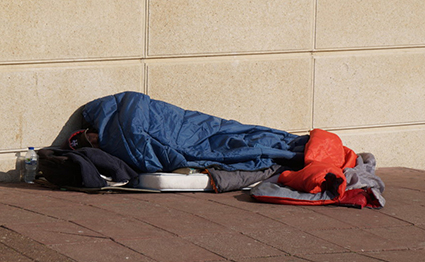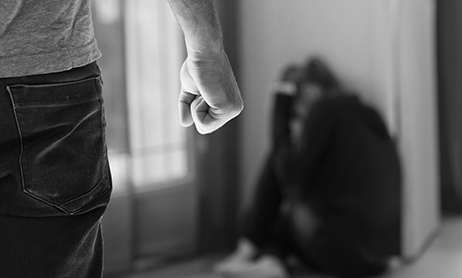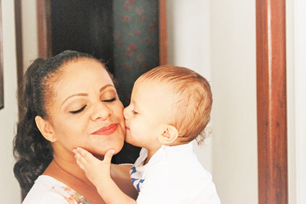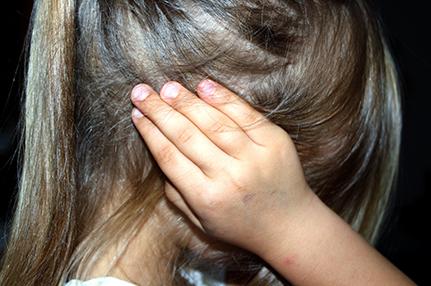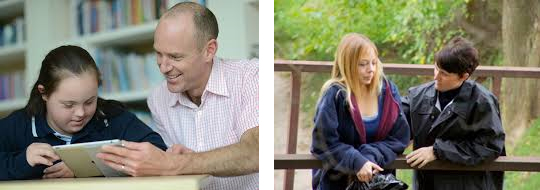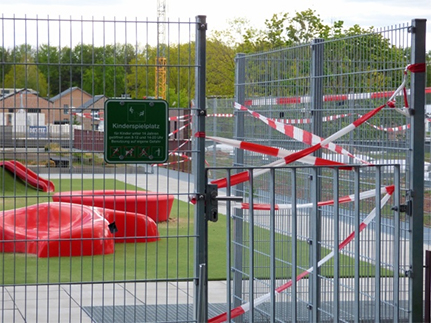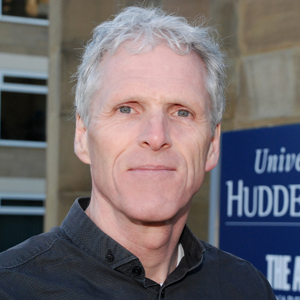
Dr Bernard Gallagher
Reader in Social Work and Applied Social Sciences
…considers the paradoxes of the pandemic in relation to the wellbeing of children and other vulnerable groups, those experiencing domestic abuse and those sleeping rough. He looks at what is being done and asks the fundamental question, will it continue when the pandemic is over?
Could ‘Covid-19’ reduce child abuse and neglect? The paradoxes of the pandemic
Introduction
Covid-19 is having devastating consequences. There were an estimated 30,000 Covid-19-related deaths, approximately, across the UK (BBC, 2020) at the time this blog began to be written (5 May 2020) and 260,000 deaths worldwide (Worldometer, 2020). Many other people have experienced, but survived, seriously debilitating illness with, for example, tens of thousands of people admitted to hospital in England alone (Cabinet Office Briefing Room, 2020).
Covid-19 has had an adverse impact on people’s lives in many other ways, including their employment and income, education (Burgess and Sievertsen, 2020), social interaction and mental health (Holmes et al., 2020). For instance, 1.2 million people in the UK had signed on for unemployment-related benefits from the start of the coronavirus crisis up to 7 April 2020 (Hope, Mikhailova and Jones, 2020).
Social issues
The pandemic has, in addition, brought to the fore at least three grave ‘social issues’: homelessness, domestic abuse, and child abuse and neglect. Contrary to many other areas of life at the moment, it appears that the situation for people who are otherwise homeless, and in particular rough sleeping, may have improved. Every council leader in England received a letter, on Thursday 26 March, from Luke Hall MP, Minister for Local Government and Homelessness, asking that all people sleeping rough (PSR) be provided with accommodation “by the end of the week” (Chakelian, 2020). The Government provided £3.2m in emergency support to councils to assist them in helping PSR to “self-isolate”. Anoosh Chakelian, Britain editor at the New Statesman magazine, points out that although it is difficult to calculate how many PSR have been “housed”, she had been informed by a representative of Crisis, the homelessness charity, that “4,000 people rough sleeping or in shelters had been moved to self-contained accommodation so far” (as of Friday 27 March).
The situation in respect of domestic abuse is, by contrast, extremely worrying. Many victims of domestic abuse who live with the perpetrator will now, as a result of the lockdown, be with their aggressors for a very large part of the day, day in day out, with little or no opportunity to avoid their abusive behaviour. The reality of these risks is born out in numerous reports: the Metropolitan Police Service, covering London, has issued 24% more charges and cautions for domestic abuse, from 9 March (Dodd, 2020); Refuge, the UK’s largest domestic abuse charity, had witnessed a 49% increase in calls to its helpline in the week before 15 April (ITV, 2020); and ‘traffic’ to the website for the National Domestic Abuse Helpline increased by 156% from February to March” (Birchley, 2020). The very policy of ‘social distancing’ for the country at large has had the unintended and dangerous consequence of forcing victims and perpetrators of domestic abuse together.
Child abuse and neglect
There are also very legitimate fears that the lockdown and the pandemic measures more generally may have resulted in more child abuse and neglect. Again, these concerns are born out by figures relating to demands upon agencies. Calls to the NSPCC helpline, for instance, from adults concerned about a child, rose from 1,867 in the four weeks before the lockdown, to 2,216 between 23 March and 19 April, an increase of almost 20% (Morgan, 2020). It was revealed, on 19 April, that Childline had, in the past week, delivered 363 counselling sessions “where children have experienced physical, sexual, emotional abuse or neglect” (ITV, 2020). This was a five-fold increase in the number of sessions provided in the previous week.
Some increase in child maltreatment, as a result of the current crisis, could have been predicted. A substantial proportion of such maltreatment is carried out by members of a child’s family, especially parents (Radford et al., 2011). As family members spend (much) more time together, so there is more opportunity for maltreatment. The likelihood of physical and emotional abuse, and possibly neglect, may be especially high where parents are under stress as a result of financial or employment pressures, having to care for their children and support them with their education, or continuing to be isolated (Cluver, 2020; Santhanam, 2020). The challenges facing parents may be especially great if they themselves are now not receiving the specialist psychosocial support they had had prior to lockdown – and even more so where that support relates to the ‘toxic trio’ of domestic abuse, substance misuse and mental health problems (Institute of Health Visiting, 2020).
Particular concerns have also been expressed over the fact that children will almost inevitably be spending more time online and may, as a result, experience more victimisation, including cyberbullying (Children’s & Young People’s Mental Health Coalition, 2020) and sexual abuse, through that medium (ECPAT International, 2020; Home Office, 2020).
A paradox
Child abuse and neglect are complex phenomena, though, and it may be, paradoxically, that some children are protected by the lockdown and other pandemic measures. Contrary to a quite common misconception, a considerable proportion of child sexual abuse (CSA) occurs in and around the home (Radford et al., 2011), and CSA requires secrecy (McNeish and Scott, 2018). With more people within a child’s home, there are more individuals and more opportunities to supervise children, and this may deter CSA by other people in the home.
And although many parents may be facing new pressures, other difficulties may have lessened. A common complaint of ‘modern times’ is that life is “so hectic”, whether this situation is caused by, for instance, caring for children, the (paid) hours a person has to work, commuting, taxiing children around or responsibilities to extended family members (Borg, 2017; Mason, 2020; Miller, 2015). Some of these demands will have reduced owing to the pandemic. Where there are now two parents at home, there is also the chance to share child care and other ‘domestic tasks’, and possibly more so than has been done before (Chung, 2020; Kelland, 2020). Some parents may, then, be under less stress and may be better able to care for their children (Parents and Carers in Performing Arts, 2020; Weikle, 2020). Many children will, moreover, now be seeing more of their parents and this is something that younger children in particular will relish (O’Malley, 2020).
When schools ‘closed’ in the UK, due to the pandemic, justifiable fears were raised over the effects this would have upon child safeguarding (Lane, 2020), but it has to be recognised that schools can be unsafe places for children. Bowen and Holtom (2019) undertook a survey on behalf of the Welsh Assembly Government and found, for example, that almost one-third of year 6 pupils (10-11year olds) had been bullied in school in the previous two months and almost 50% in the last year. The Anti-Bullying Alliance (2017) reports that: some children are bullied “a lot or always”; bullying is more common among children on free school meals, and those who are disabled or have special educational needs; and children who are bullied are more likely to truant or be kept home by their parents. ‘Lockdown’ will, then, be protecting some vulnerable children from potentially highly-distressing, school-based victimisation.
There are, in addition, some initial reports of falls in knife crimes against young people (Cumiskey, 2020), and of other young people now being in a situation where they are more able and willing to resist being drawn into criminal exploitation, both of which have been credited to the lockdown (Swann and Shaw, 2020).
The social work paradox
The closure of schools has rightly made us more aware and appreciative of the important role that school staff play in child safeguarding. But it is another ‘paradox’ of the pandemic that the key agency in child protection – social work – has received far less recognition for the role it undertakes. Yet it is social workers who have the legal responsibility for visiting children at risk and their parents; work that involves supporting and monitoring ‘children in need’, and those on child protection plans or in [state] care, and often on a regular and long-term basis. This marginalisation of social workers is especially ironic given that social workers are continuing to perform this role during the present crisis – and sometimes without PPE (personal protective equipment) (Turner, Blackwell and Carter, 2020; Simpson, 2020).
And to add insult to injury, when any ‘experts are called upon to discuss child protection in the pandemic, they are very often not from the social work profession but from organisations such as the NSPCC and the Office of the Children’s Commissioner (for England), which have much less, if any, experience of frontline child protection work (see, for example, BBC, 2020b).
Another illustration of the long-running sidelining of social work and social workers can be found in current government Covid-19-related guidance for “parents and carers to keep children safe online” (see https://bit.ly/3cjfitL). Parents and carers are advised that they can contact the police, including the National Crime Agency, and a host of other voluntary organisations, such as Childline, Childnet and the Internet Watch Foundation, should they need support, but there is absolutely no mention of children’s social services.
Social workers must be maddened when they reflect on the fact that the only time society ‘acknowledges’ the critical position they fulfil in child protection is in the midst of child abuse ‘scandals’, when politicians and the media dash to find someone to blame, invariably settling upon their profession (Tickle, 2018).
The ultimate paradox
The ultimate pandemic paradox, though, must be the Government’s new found concern over child protection and other social issues. For the past 10 years, Conservative governments, either on their own or in coalition, have implemented swingeing cuts in public expenditure. This has resulted in major reductions in personnel, services and facilities across all statutory sectors involved in child protection (i.e. children’s social services, criminal justice, education and health), and within voluntary organisations undertaking some of this same work. This policy has been implemented at the same time as the numbers of both children and child protection cases in the UK have been increasing (Gallagher, 2017).
One of the most glaring manifestations of these cuts has been in Sure Start Children’s Centres (SSCCs); set up by the then Labour government, in 1998, and designed, in part, to provide the much lauded ‘early intervention’ in the lives of some of the country’s most vulnerable families (Bouchal and Norris, 2014). The Government’s own figures reveal, however, that over 1,300 SSCCs had to be closed between 2010 and 2019 due to local government funding shortfalls (Morton, 2020).
There is abundant evidence of cuts and rising need in respect of numerous other vulnerable groups – including some of the very same groups whose cause the Government is now, supposedly, trumpeting. A Women’s Aid survey, for example, found that one third of domestic abuse services “had been forced to reduce the amount of support they provide in the last five years” (Whitehead, 2019). Crisis (2019) reports that government figures showed a 165% increase in the number of PSR in England between 2010 and 2018.
These so-called “austerity” measures have also taken place while the Government continues to commit to funding the ‘HS2’ high speed rail link from London to the Midlands and the north of England; one estimated cost for which is well over £100bn (Institute for Government, 2020).
Successive Conservative governments have claimed that its public expenditure cuts are motivated by the need to reduce the ‘deficit’ and the national debt, but both right-wing and independent observers have noted that this policy fulfils the longstanding Tory party ideological aim of reducing the size of the state (see, for example, Shorthouse and Kirkby, 2014; Smith, 2015).
Conclusion
It may well be, then, that the Covid-19 pandemic does lead to more child abuse and neglect in some circumstances – but reductions in others. And it is right that the Government has highlighted concern over the wellbeing of children and other vulnerable groups, such as those experiencing domestic abuse or sleeping rough. The Government also has to be given some credit for initiating measures to help these vulnerable groups. This includes its intervention which led, subsequently, to local authorities and voluntary organisations making monumental efforts to accommodate thousands of PSR in a matter of days. (A fundamental question does have to be asked, though: why did the Government need a pandemic to take seriously the terrible problem of PSR; an issue it has ‘sat on’ for years?)
Many people have been expressing a wish for some of the ‘gains’ they have realised from the pandemic to be retained when this crisis is over. This is in terms of, for instance, a better work-life balance, interacting more with family and friends, and a re-ordering of their priorities (Mason, 2020; Weikle, 2020).
One would hope – although not with a great degree of confidence – that when the pandemic is over, the Government would also seek to retain some gains, and in particular would continue to treat child abuse and neglect, domestic abuse and rough sleeping, and a number of other acute social issues, as the emergencies they are.
We will, perhaps, receive an early sign of whether the Government has developed a post-pandemic, social conscience when it comes to deciding the fate of the thousands of PSR who have been ‘accommodated’ and whether it allows them to be thrown back out on to the streets.”
Human Behaviour
Browse all our blogs related to Human Behaviour.
Politics
Browse all our blogs related to Politics.
Children
Browse all our blogs related to Children.
Social Work
Browse all our blogs related to Social Work.

